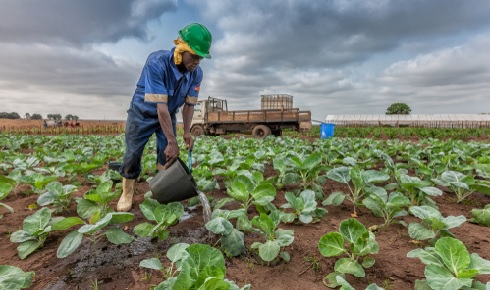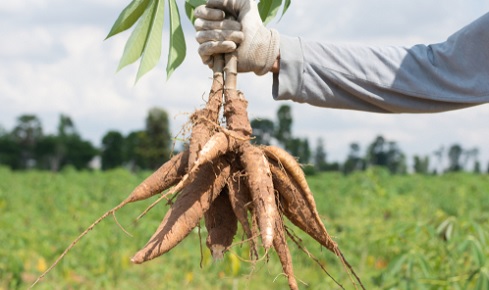The Threat of a Plant Disease Pandemic

Preparation for future pandemics should not just focus on human infections, but also those affecting the crops that millions rely on
Feb 22nd 2021
Hunger and disease are inextricably linked. Not only does poor nutrition cause disease, but outbreaks of disease affect food security and nutrition. The UN Food and Agriculture Organization estimates that between 90 and 140 million people will be pushed into undernourishment as a result of the economic and social disruption caused by COVID-19, which has added to the already pressing problem of global food insecurity. More than 800 million people are now at risk of hunger worldwide and up to nine million people are thought to have died from malnutrition-related diseases in 2020[1].
Epidemics of plant diseases also pose a significant threat to local and global food security, exacerbating the problem of malnutrition[2]. Yield losses caused by plant viruses are thought to cost global agriculture approximately $30bn (£22bn) a year, and when plant pests and other plant pathogens are included that figure rises to $220bn (£161bn) a year[3].
Crop failures and famines
When plant virus epidemics occur in a staple crop the results can be devastating. Outbreaks of cassava mosaic begomoviruses, for example, are estimated to cause an annual loss of 25 million tons of cassava in Africa, Sri Lanka and India, and where it is a staple crop this has directly led to famines[3].
Unlike bacterial or fungal plant diseases, viral plant diseases cannot be cured or controlled with chemical spraying, so preventive measures usually involve the destruction of plants and the use of pesticides to control vector organisms. Like COVID-19, the highest impact occurs with emerging diseases, defined by a rapid increase in disease incidence, geographical range and pathogenicity[4].
Climate change is also likely to affect the distribution and survival of plant viruses and their vectors, and potentially their virulence and pathogenicity, expanding the frequency and scale of outbreaks[5]. Pathogen-related crop loss will continue to disproportionately affect food-insecure populations in developing countries, while rich countries with greater diversity of crops and imports are likely to be less severely affected.
 The health of a single staple crop such as cassava can directly impact the nutrition available to millions of people.
The health of a single staple crop such as cassava can directly impact the nutrition available to millions of people.Research outlook
As funding for COVID-19 research has ballooned, it is important that funding for combating plant viruses does not simultaneously decline, as that would negatively impact plant disease resistance research and the biosecurity measures that prevent plant diseases from spreading.
Researchers have made substantial advances in understanding plant-virus interactions over the past two decades. More recently studies of plant immunity, plant antiviral systems and the use of gene-editing technologies offer new strategies for limiting the effects of viral plant diseases. However, the development of crops with efficient and broad resistance to viral diseases is still a challenge for agronomy, as is the widespread use of disease monitoring, rapid molecular diagnostics and international ‘phytosanitary’ processes to improve biosecurity.
The current pandemic has emphasised the need to plan and prepare for future outbreaks of viral disease, not just to prevent deaths but to stop the catastrophic economic and societal disruption from widespread infection. We should not forget the deadly impact non-human viruses can have on the health of the hundreds of millions of people facing hunger too.
Dr Kate M Creasey Krainer is the president and founder of Grow More Foundation
Matthew Venezia is Grow More Foundation’s lead intern and an undergraduate at Stony Brook University, New York, US
1) FAO, IFAD, UNICEF, WFP and WHO. The state of food security and nutrition in the world 2020: Transforming food systems for affordable healthy diets. 2020, Rome, FAO.
2) He, S. & Creasey Krainer, K. M. Pandemics of people and plants: Which is the greater threat to food security? Mol. Plant 13 (7), 933–934 (2020).
3) Nicaise, V. Crop immunity against viruses: Outcomes and future challenges. Front. Plant Sci. 5 (660) (2014).
4) Rubio, L. et al. Detection of plant viruses and disease management: Relevance of genetic diversity and evolution. Front. Plant Sci. (July 2020).
5) Trebicki, P. Climate change and plant virus epidemiology. Virus Res. 286 (198059) (2020).


